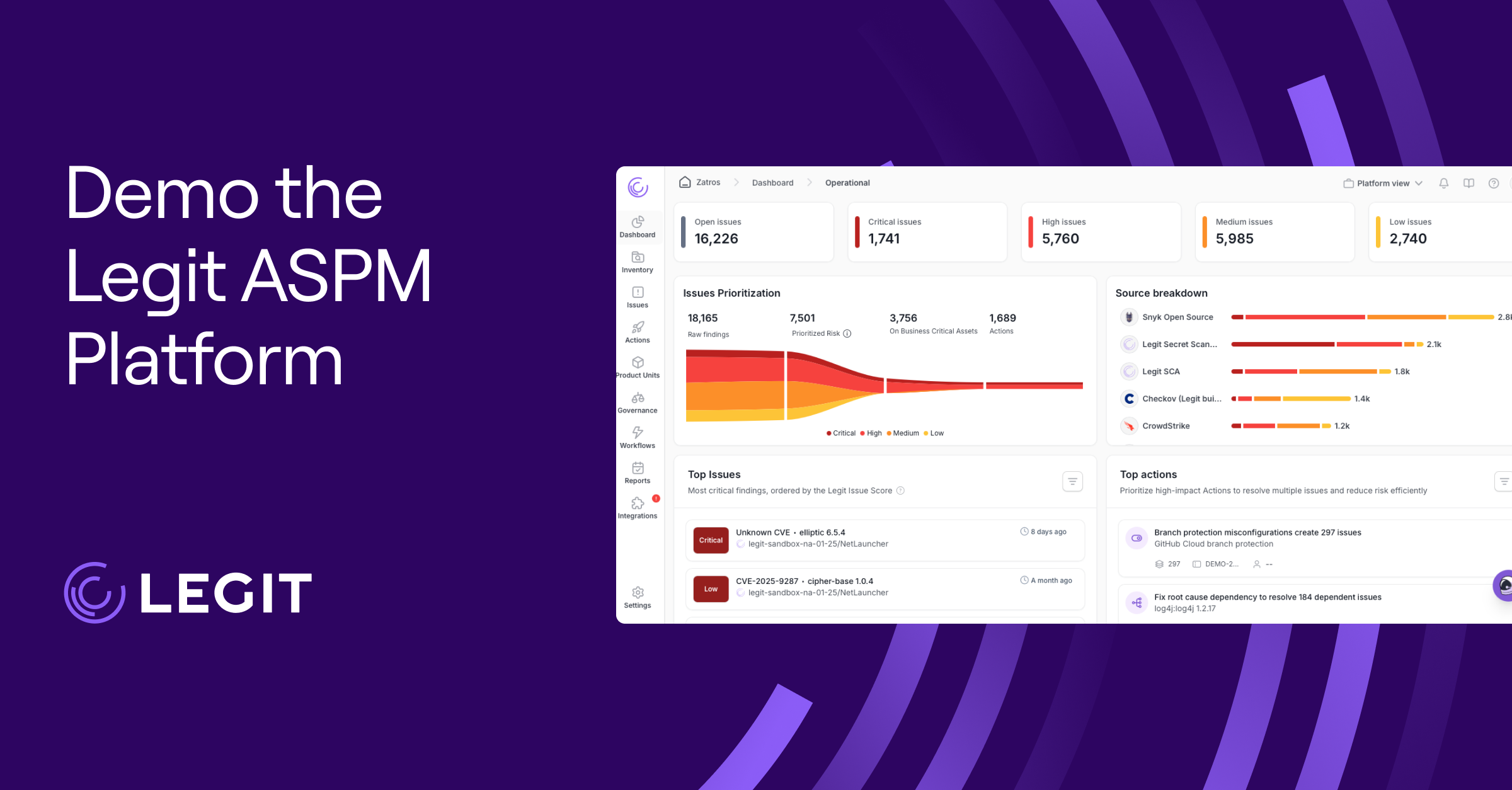Hackers go where the data is—and more than ever, that means the cloud. From payroll files to patient charts, cloud infrastructure now holds the information criminals most want to steal, leak, or ransom.
Organizations are responding with cloud security solutions that block unauthorized access to consumer, employee, and corporate data. These tools lock down cloud networks and on-premises systems alike, reducing exposure and strengthening overall security posture.
But with so many cloud security providers and products on the market, the challenge is finding one that offers the coverage your business needs. Most organizations prioritize visibility, security controls, and built-in protections to keep data safe in multicloud environments, but how do you know if a solution delivers all three?
In this guide, we'll explain the key types of cloud security solutions and share tips for choosing one that’s right for you.
What Are Cloud Security Solutions?
Cloud security solutions are technologies, controls, policies, and best practices that work together to protect cloud environments. They identify and eliminate vulnerabilities that could compromise cloud infrastructure, applications, or sensitive data.
The most effective are cloud-native, meaning they’re built to run in the cloud rather than adapted from older, on-premises legacy systems. This makes them easier to integrate, deploy, update, or retire as needed. Most follow a shared responsibility model, where the cloud service provider secures the underlying network and infrastructure, while the user is accountable for data protection, access control, and compliance.
Many types of cloud security solutions exist, and responsibilities shift depending on the service model:
- Infrastructure as a Service (IaaS): The provider handles the physical infrastructure and virtualization, while you manage operating systems, applications, and data.
- Platform as a Service (PaaS): Here, the provider also oversees the infrastructure and runtime environment, so your team can focus on applications and data.
- Software as a Service (SaaS): Nearly everything—infrastructure, platform, and application—falls under the provider’s control, but you’re responsible for securing user access and protecting your data within the service.
Why Is Cloud Security Important?
Cloud security is important because it protects the data and systems companies rely on, from customer records to core operations, against increasingly sophisticated attacks. It matters to organizations of every size, from startups to global enterprises in sectors like healthcare, finance, retail, logistics, and technology—especially as they embrace remote work and rely more on cloud platforms.
The need for secure cloud solutions is even greater in multicloud or hybrid environments, where managing systems across different providers expands attackers’ window of opportunity.
And the stakes are high: For example, in 2023, attackers guessed an employee’s password at a 160-year-old U.K. logistics company and deployed ransomware. Without the resources to pay the ransome or hire third-party tech support to restore their systems, the company closed permanently, costing hundreds their jobs.
Benefits of Cloud Security
Many organizations adopt cloud security software to prevent situations like the one above, but it also delivers several other measurable advantages:
- Data loss prevention (DLP): Comprehensive cloud security solutions guard data in transit and at rest, using zero trust and least privilege access management to reduce the risk of data breaches.
- Improved scalability and flexibility: Because cloud-based security tools are on demand and require no physical installation, organizations can provision or deprovision quickly and easily whenever they need to, such as for seasonal peaks or slower periods.
- Cost optimization: Secure cloud networks are more budget-friendly than on-premises solutions because they eliminate the need for expensive hardware and the physical space to store it.
- Centralized visibility and access control: Many cloud platforms use dashboards that bring user activity, permissions, and system status into one view, which helps teams catch unusual behavior early and act before it escalates.
- Improved compliance: In regulated industries, strong cloud security controls mean clearer audit trails and fewer opportunities for inspectors to find compliance issues.
Cloud-Based Security Solutions
Securing a cloud environment takes more than one tool. The solutions below work together to address different security needs, from managing access and protecting data to detecting threats and defending workloads.
Cloud Access Security Brokers (CASBs)
CASBs act as an intermediary between end users and cloud service providers. They enforce organizational security policies and give security teams visibility into cloud application usage. CASBs are especially useful in bring-your-own-device (BYOD) environments.
Identity and Access Management (IAM)
IAM controls who can access specific resources in your cloud services and what actions they can take. Common features include role-based access control (RBAC), multi-factor authentication (MFA), single sign-on (SSO), privileged access management (PAM), and zero trust policies.
Cloud Security Posture Management (CSPM)
CSPM solutions monitor cloud infrastructure continuously for vulnerabilities such as misconfigurations, compliance violations, weak encryption defaults, and open security groups. They use automated remediation to block attacks or stop them from spreading.
Cloud Workload Protection Platforms (CWPPs)
CWPPs secure workloads—virtual machines, containers, and serverless functions—that run in the cloud. They typically include runtime protection, host-based intrusion detection, behavioral monitoring, and vulnerability management.
Data Security Posture Management (DPSM)
DSPM solutions focus on data protection by monitoring where you store sensitive data, who can access it, and how it moves across the organization. This helps security teams reduce or eliminate attack paths to sensitive data.
Security Incident and Event Management (SIEM)
SIEM platforms aggregate and analyze logs from multiple systems to detect threats and suspicious behavior. Modern, cloud-native SIEM tools build on this by integrating with CSPM and IAM for faster detection and response.
Cloud Native Application Protection Platforms (CNAPPs)
CNAPPs provide end-to-end protection for cloud native applications, from development through deployment. They consolidate multiple tools into one platform and prevent weaknesses that develop when security tools operate separately.
Cloud Security Tools: 5 Options to Consider
The cloud security market includes long-standing leaders and newer entrants, each with distinct strengths. The five examples below show how different tools operate in practice and where they deliver the most value.
1. Wiz Data Security Posture Management
Wiz delivers continuous monitoring for sensitive data and alerts security teams to potential exposure paths, like personally identifiable information (PII), before attackers can exploit them. It strengthens access controls, maps data flows, and supports both DSPM and CSPM strategies.
2. Microsoft Defender for Cloud
Microsoft Defender protects Azure and other Microsoft cloud products, as well as AWS, Google Cloud, and on-premises systems. Built for multicloud and hybrid environments, it combines threat intelligence with strong integration across Microsoft’s ecosystem, and its rapid expansion in recent years has solidified its reputation in cyber defense.
3. Cisco Secure Cloudlock
Cisco’s Cloudlock is a cloud-native CASB that protects data, applications, and users, making it a strong choice for sectors with strict compliance demands such as healthcare and finance. Its API integration, prebuilt configurations, and automation streamline deployment and strengthen security with minimal downtime.
4. Splunk
Popular with security analysts, Splunk Enterprise Security and Splunk Cloud—now part of Cisco—is a cloud-native SIEM known for centralized, real-time visibility and faster detection. It integrates with IAM and CSPM to deliver enriched alerts, and its built-in automation tools, including Splunk SOAR playbooks, allow teams to respond quickly.
5. Palo Alto Networks Prisma Cloud
Palo Alto Networks’ Prisma Cloud is a CNAPP that unifies multiple security solutions for true end-to-end coverage. It uses policy-as-code and least privilege guardrails to harden cloud infrastructure without slowing deployments, while its AI-powered capabilities adapt to evolving threats—even those from malicious AI tools.
Cloud Security Solution With Legit Security
Most cloud security tools stop at the infrastructure layer, leaving sensitive data and applications exposed. Under the shared responsibility model, your provider locks down the infrastructure. Protecting the rest, however, is on you. That’s where breaches often happen, but Legit Security’s got your back.
With Legit’s AI-SPM, you can correlate code, pipeline, and runtime findings in a single view, speeding remediation and fixing misconfigurations before attackers exploit them. The platform enforces security controls and policy-as-code in CI/CD, blocking risky changes at the source. And because Legit links development risks directly to production impacts, you can use CSPM to target and close dangerous exposure points with precision.
If you’re scaling cloud-native development, Legit Security keeps your data and product safe from code to deployment. Request a demo to get started.
Download our new whitepaper.


